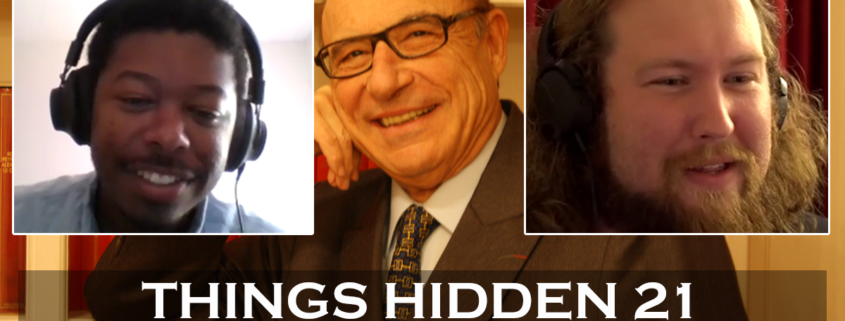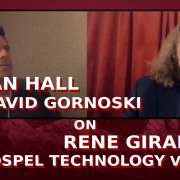THINGS HIDDEN 21: Jean-Michel Oughourlian Interview
In this THINGS HIDDEN conversation, David Gornoski and Shannon Braswell are joined by Jean-Michel Oughourlian, psychologist and author of The Mimetic Brain. Oughourlian starts the discussion with an insider’s perspective as Girard’s collaborator and how he found breakthroughs in the field of psychotherapy upon studying mimetic theory.
“The mirror neuron is something fantastic,” Oughourlian remarks, “because if you experiment, if you put a CT scan or PET scan on your own head and mine, and I’m drinking a glass of water, and you are on the other side of the Atlantic just looking at me, in both our brains the same regions will be activated the same way. In other words, whether I do the action or whether you look at it, the brain functions the same way–it mirrors what I’m doing.”
How does this discovery relate to the right and left-hemisphere brain study by Iain McGilchrist? How has mimetic theory helped Jean-Michel Oughourlian in the field of psychotheraphy?
“What I try to do when I see a patient is not so much find out what he is suffering from but to find out who he is suffering from. In other words, who is his rival,” Oughourlian states, “This becomes extremely tricky because some people look like friends but they are your enemies, some other people you think are your enemies but they are friends, they want to help.”
Is mimetic theory connected to physics? What is consciousness, or more precisely, how does consciousness function? Since we’re all compelled to imitate, how should we select our role models? Listen to the full podcast to find out and more.
Buy ‘The Mimetic Brain’ on Amazon.












A simple connection between mimetic theory and Mcgilchrist to me is the left-brain focus on grasping and mimetic rivalry focus on wanting what the other has.
I’m interested in how patterns and imitation activate the right hemisphere and bring us into a liminal time period. I have read where that is the time when we allow the sacrificial victim to live and it was the stretching of this time that leads to justice and laws rather than a spiral to violent revenge.
To me art can also work this way, if it presents finite real objects in a pattern that opens your mind to the infinite, where you are released from wanting. Perhaps liturgical church ceremonies work the same way? I came to this making stained glass, where the light that comes through the glass cannot be grasped or possessed.